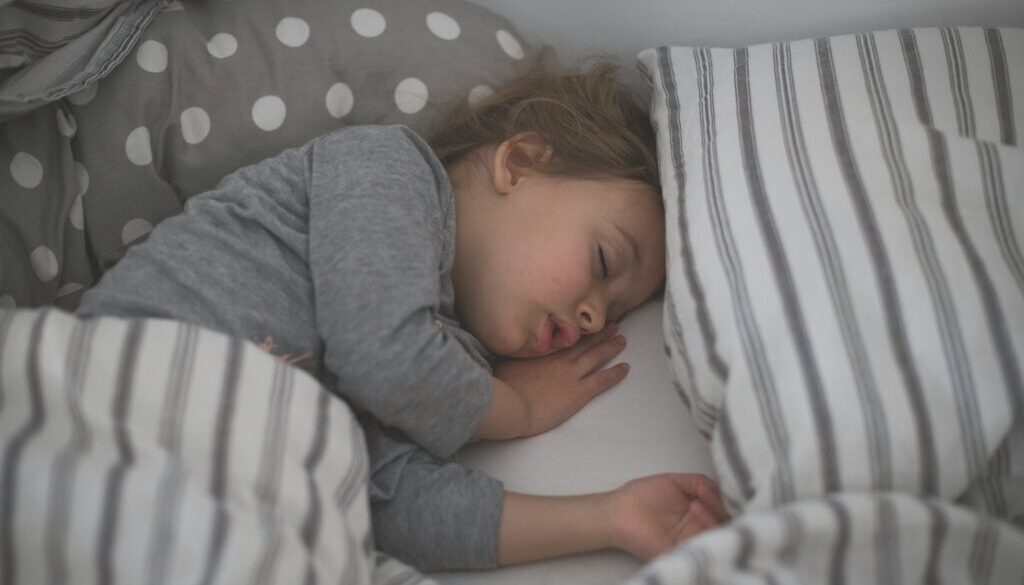Unsafe sleeping? Mattresses may expose children to toxins as they sleep, studies find
By Shannon Kelleher
While monsters under the bed may be just childhood fantasy, parents might have real reason to fear what’s lurking in their children’s mattresses.
These mattresses can contain a variety of toxic chemicals including flame retardants and substances called “plasticizers” that make materials softer and more flexible, exposing kids and babies as they sleep to harmful emissions linked to issues with cognitive function, asthma, cancer and other health problems, according to new peer-reviewed research.
In a study published April 15 in the Environmental Science & Technology Letters, scientists detected over two dozen phthalates, flame retardants, and UV-filter chemicals (which protect materials from sunlight) in 25 Canadian children’s bedrooms, with the highest levels in the air around the beds where the children slept.
A related study published in the journal Environmental Science & Technology pointed to mattresses as the likely source, finding emissions of 21 semi-volatile organic compounds in 16 newly purchased children’s mattresses when the researchers simulated a child’s body weight and temperature.
While the testing took place with mattresses purchased in Canada, it seems likely that mattresses in the US would contain similar chemicals of concern, since the countries use some of the same brands and likely rely on some of the same suppliers, said Arlene Blum, executive director of the Green Science Policy Institute and an author of one of the studies.
The findings “underscore the role of children’s mattresses as a significant source” of these chemicals in children’s sleeping environments and are “particularly concerning given the substantial amount of time children spend sleeping each day, their tendency for higher exposures and increased susceptibility to harm due to their developmental stage,” the authors write.
The results suggest policymakers should put in place stricter regulations to keep harmful chemicals out of mattresses before they wind up in children’s bedrooms, the authors concluded. Mattress manufacturers are not required to disclose all the materials they include in their products, making it difficult for consumers to make informed choices.
Many mattresses contain polyurethane foam that can emit volatile organic compounds (VOCs) for years, putting sleepers at risk for respiratory irritation, asthma, and cancer. They also often contain fragrances that may be laced with hormone-disrupting phthalates, as well as flame retardants linked to reproductive and nervous system harms. In the study in which the researchers tested new mattresses, they found that all of the mattresses contained the flame retardant chemicals organophosphate esters.
“Their addition, especially of the halogenated [organophosphate esters] that are not necessarily used as plasticizers, is puzzling since they are not required to meet Canada’s flammability standards for children’s mattresses,” the authors wrote.
In the US, a federal open-flame flammability standard requires mattresses to meet certain criteria intended to limit how fast flames can spread if the product catches on fire, although the regulation doesn’t specifically require the use of chemical flame retardants.
In addition to posing health risks, many flame retardant chemicals do not naturally break down in the environment and often build up in people and animals. Furthermore, these chemicals only delay ignition by a few seconds and can actually make fires more dangerous by increasing emissions of smoke and toxic gases, according to the Green Science Policy Institute’s website.
In 2015, groups including the American Academy of Pediatrics and the Consumer Federation of America petitioned the US Consumer Product Safety Commission to ban harmful organohalogen flame retardants in mattresses and other products.
In 2017, the Commission issued a guidance document recommending that manufacturers avoid intentionally adding these types of flame retardants to certain products, while 16 states have introduced or adopted policies to protect consumers from toxic flame retardants.
While VOCs released by “off-gassing” from new mattresses “may smell bad, they’re generally considered harmless,” according to Sleep Foundation.org. The site acknowledges that of-gassing can cause headaches, nausea or dizziness in people sensitive to scents and that it can cause breathing difficulties in people with asthma.
A 2022 study in the journal Chemosphere found that emissions of VOCs from two new memory foam mattresses reached their highest during their first day of use, with emissions decreasing over the next 31 days. Since the levels of VOCs emitted were below benchmarks for health and fell within indoor air quality recommendations, the researchers concluded that these mattresses were unlikely to pose health risks.
(Featured image by Isaac Quesada on Unsplash.)
 EWG
EWG


